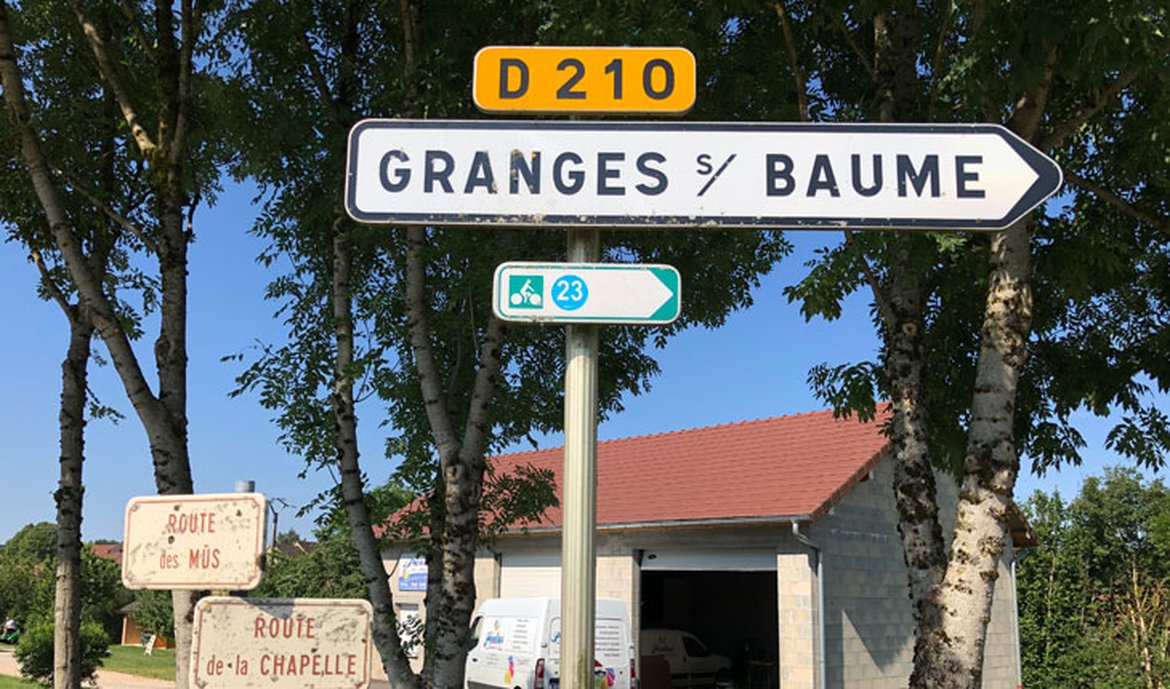Show Me The Way
July 26, 2019

I’ve just returned from a three-week trip to France, part of which I spent cycling in the little-known Jura region with my partner (and chief domestique) Richard.
We had long heard that the Jura, located in the east, near the Swiss border, is the best place to ride a bike. Whoa! we thought, in a country that has practically elevated cycling to a religion (like soccer in South America), that is saying a lot.
Unlike in our hometown of Toronto (where motorists tend to see cyclists as their sworn enemy, locked in a eternal battle for eternal dominance), in France, bikes and cars somehow manage to co-exist in a peaceful, mutually-respectful relationship. It's not unusual for a French motorist, approaching a cyclist from behind, for example, to signal, calmly wait for an opening, then pull way over into the other lane to pass the cyclist. Calmly. Did I say calmly?
Not only that, France is a truly beautiful country, offering infinite variety: dense forests, lush valleys, winding rivers, hillside vineyards, scenic Michelin "green" roads, classic castle ruins, charming medieval villages, and, should you have the legs for them, steep mountains. What cyclist wouldn’t love all that?
So, in a country awash in cycling opportunities, what makes the Jura so special?
One word: Signposts.
Yes, my friends, like many things in life, it often boils down to a reliable wayfinding system.
The good folks at Jura Tourism have seen to it that you can explore their lovely region via 2000 kilometers of marked bicycle routes. No need to mess with your GPS or haul out one of those big Michelin maps (yeah, I know, we tend to be old school…the result of finding ourselves in one too many farmers’ fields when relying on the “trusty” GPS).
Instead, you go online to the Jura Tourisme website, pick a route (like the No. 23 in the photo), find a starting point, then simply follow the roadside signs. It’s brilliant.
Like cycling, effective writing depends on signposts. Signposts are the clues you give your reader about where you’re headed. Just as those Jura signposts keep appearing, and we keep cycling, confident that we’re actually going somewhere, signposts in writing show the way. Signposts nudge the reader along the journey, signalling the structure of your piece, highlighting the main ideas, and helpfully calling out transitions.
Signposts help to bring clarity and predictability to your piece. In turn, this makes your reader feel smart. They “get it.” And, most importantly, when a reader can sense what’s to come, when they can move easily from sentence to sentence, they are much more likely to keep going.
Here are three common methods you can use to “signpost” or signal what’s coming. These aren’t mutually exclusive, by the way; in any given piece of writing – a proposal, a report, a blog post – you will often use more than one.
1. Heading and subheadings
Headings and subheadings are your friend. They help you plan your draft, and they tell the reader, at a glance, what your document is all about. Strive to create informative headings – something specific and substantial (We have a multidisciplinary team) versus generic (About us). This is especially important for online writing, where people tend to scan and grab rather than read.
2. Topic sentences
It was not for nothing that your high school teacher taught you to create a topic sentence for each paragraph. A topic sentence’s very job is to clearly state what the point of the paragraph is.
Following the predictability principle, make sure your paragraph does indeed talk about that point. And ideally, you should stick to one idea per paragraph, with supporting information and examples to back up each topic sentence.
Again, since people tend to scan text, even if they only read the first sentence of every paragraph, they will still be able to follow your argument or get your message.
3. Transition phrases and words
The Jura signposts are particularly helpful when you come to a junction. Say you’re tootling along the quiet little D4 and you suddenly come to a fork in the road. Fear not. Right there in plain view, right where you’d expect it, is a little sign, politely telling you to make the turn on to the equally lovely D2.
Similarly, transition phrases and words (like similarly) help the reader move effortlessly through your piece – from one sentence to the next and one paragraph to the next.
Here are a few of the more common transition phrases and words:
- First, second, third
- To begin with
- Meanwhile
- Moreover
- For example
- In other words
- To clarify
- Think about that for a minute (a particularly attention-grabbing phrase)
For a full list of transition words and phrases to use in different situations, check out this excellent post from Hubspot, The Professional Writer’s List of Transition Words & Phrases.
To summarize, (aha! another transition phrase), signposts are as essential for the writer as they are for the touring cyclist. Without them, there's a good chance we’d all be wandering in the wilderness.
Remember this:
Use signposts to keep your copy flowing and your readers engaged.
Writing Tips & Tools